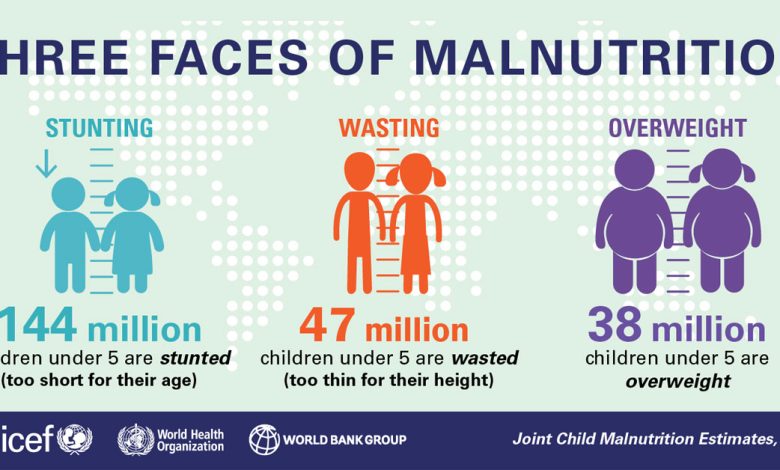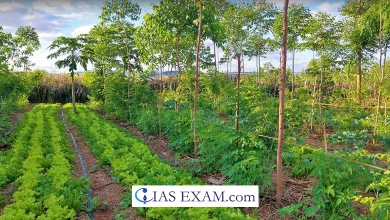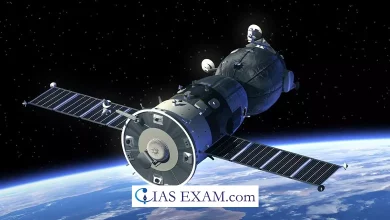
Context- Proportionate with worldwide and local patterns, India keeps on showing a decrease in hindering and recorded 1.6 crore less hindered kids under five years in 2022 when contrasted with 2012, as per the Joint Malnutrition Estimates (JME) delivered by UNICEF, WHO and the World Bank.
Key Highlights
- Wasting:
-
-
- The estimates for waste are based on prevalence data from countries at the national level.
- In 2022, India’s overall prevalence of wasting was 18.7%, accounting for 49% of the global burden of this malnutrition indicator.
- Country-level modelled estimates derived from primary sources, such as national household surveys based on a methodology developed by the JME Working Group, serve as the foundation for the JME estimates for stunting and obesity.
-
- Obesity:
-
-
- In a decade, the prevalence of obesity slightly increased from 2.2% in 2012 to 2.8% in 2022, reaching 31.8 lakh from 27.5 lakh, accounting for 8.8% of the global share.
- However, the overall prevalence of obesity is low, far below the global prevalence of 5.6%.
- In a decade, the prevalence of obesity slightly increased from 2.2% in 2012 to 2.8% in 2022, reaching 31.8 lakh from 27.5 lakh, accounting for 8.8% of the global share.
-
- Stunting:
-
- The prevalence of stunting worldwide decreased from 26.3 percent in 2012 to 22.3 percent in 2022. The decline was much more pronounced in South Asia, where it fell from 40.3% to 30.5%.
- According to the National Family Health Survey (NFHS)-5 (2019-2021) data, the prevalence of stunting was estimated at 35.5% in India, down from 38% in NFHS-4 (2016) and 48% in NFHS-3 (2006).
Weight Issues
- There was no improvement in the weight issue around the world, as its commonness rate developed from 5.5% to 5.6%.
- There was a worldwide predominance of 6.8% in 2022, however there is no examination accessible for previous years as it depends on national-level country prevalence data.
- According to the JME report, progress is insufficient to meet the global nutrition goals set by the World Health Assembly (WHA) in 2025 and the Sustainable Development Goal (SDG) 2 goals in 2030; something like 33% of all nations are ‘on target’ to split the quantity of kids impacted by hindering by 2030.
- Fewer countries are supposed to accomplish the 2030 objective of 3% predominance for overweight, with only one of every six nations right now ‘on track’.
India’s Scenario
- The general commitment of India’s global burden from 29 to 24 was fascinating.
- Although anemia was disappointing, NFHS-5 showed evidence of continued reductions in stunting and instances of underweight children.
- India also showed an improvement in access to health services – family planning, antenatal care, deworming, and breastfeeding counseling.
- However it is difficult to measure acute malnutrition over short periods using this indicator.
- India and South Asia probably have a more complicated situation.
- Two-thirds of children at 12 or 24 months had wasting at birth or at one month of age in India, whereas in Africa, it begins at four to six months.
- This indicates that maternal malnutrition is responsible for two-thirds of the wasting.
- As a result, children were born at a very low weight for their height and did not recover even after gaining weight for six or twelve months.
About Malnutrition
- When the body lacks the vitamins, minerals, and other nutrients it needs to maintain healthy tissues and organ function, malnutrition occurs.
- Either too much or too little food is the cause of malnutrition.
Government Policies for Malnutrition
- POSHAN Abhiyaan: In an effort to achieve a “Malnutrition Free India” by 2022, the Indian government has launched the National Nutrition Mission (NNM) or POSHAN Abhiyaan.
- Anemia Mukt Bharat Abhiyan: Sent off in 2018, the mission targets speeding up the yearly pace of decline of frailty from one to three rate focuses.
- Midday Meal Scheme (MDM): It means to work on nourishing levels among younger students which likewise emphatically affects enrolment, maintenance and participation in schools.
- National Food Security Act, or NFSA, 2013: Through its associated schemes and programs, it aims to provide the most vulnerable with food and nutrition security, making food access a legal right.
- PMMVY, or Pradhan Mantri Matru Vandana Yojana: Rs.6,000 is moved straightforwardly to the ledgers of pregnant individuals for benefiting better offices for their conveyance.
- Integrated Child Development Services (ICDS) Scheme:: The program, which was first implemented in 1975, aims to provide food, preschool education, primary healthcare, vaccinations, health checks, and referral services to mothers of children under the age of six.
Way Forward
- There is a need to learn more and more about waste, and that is the big agenda and how the determinations are different for India and Asia.





.png)



